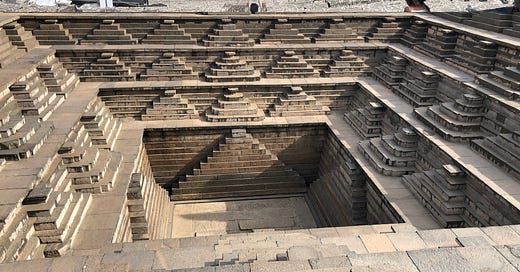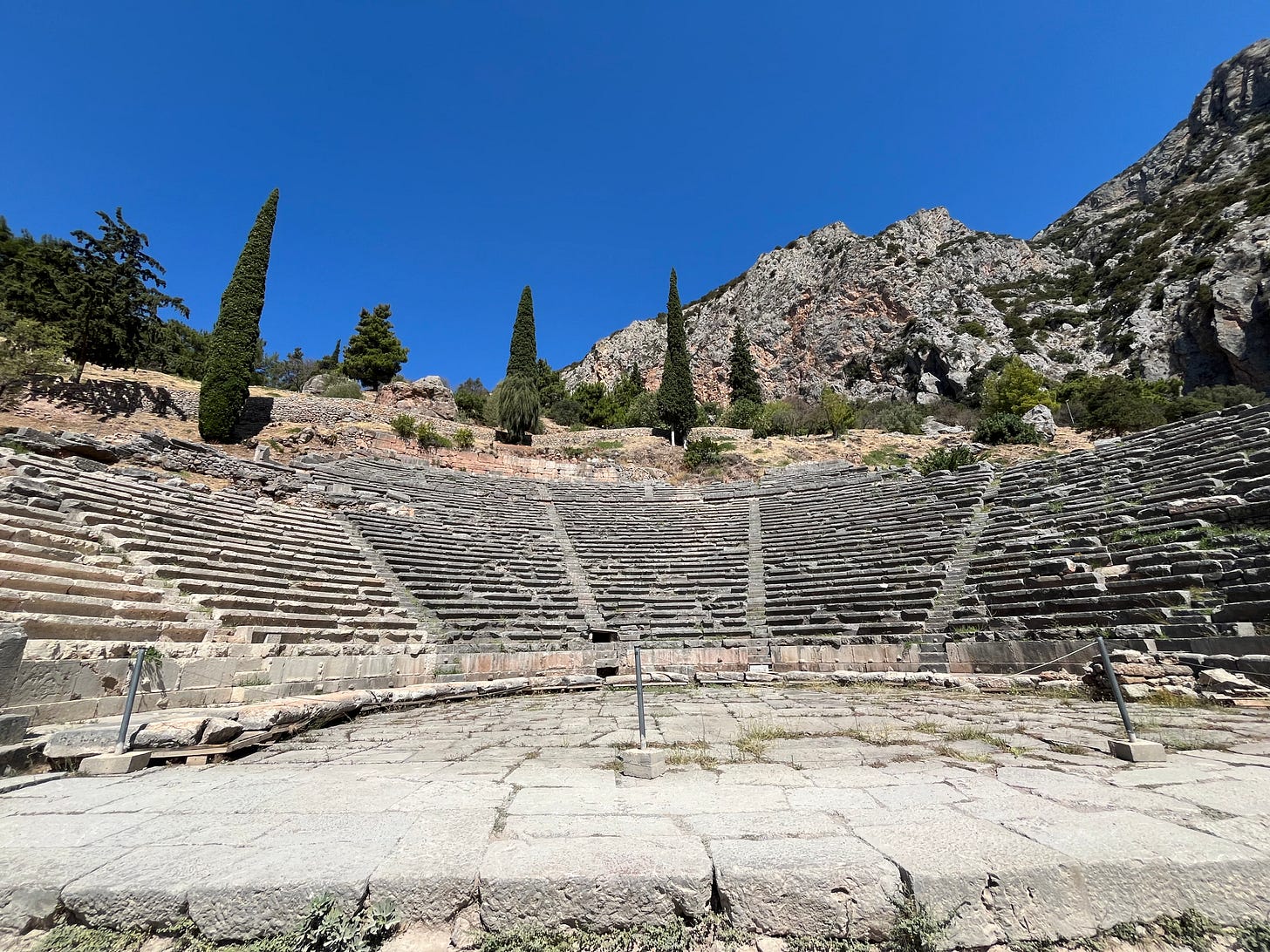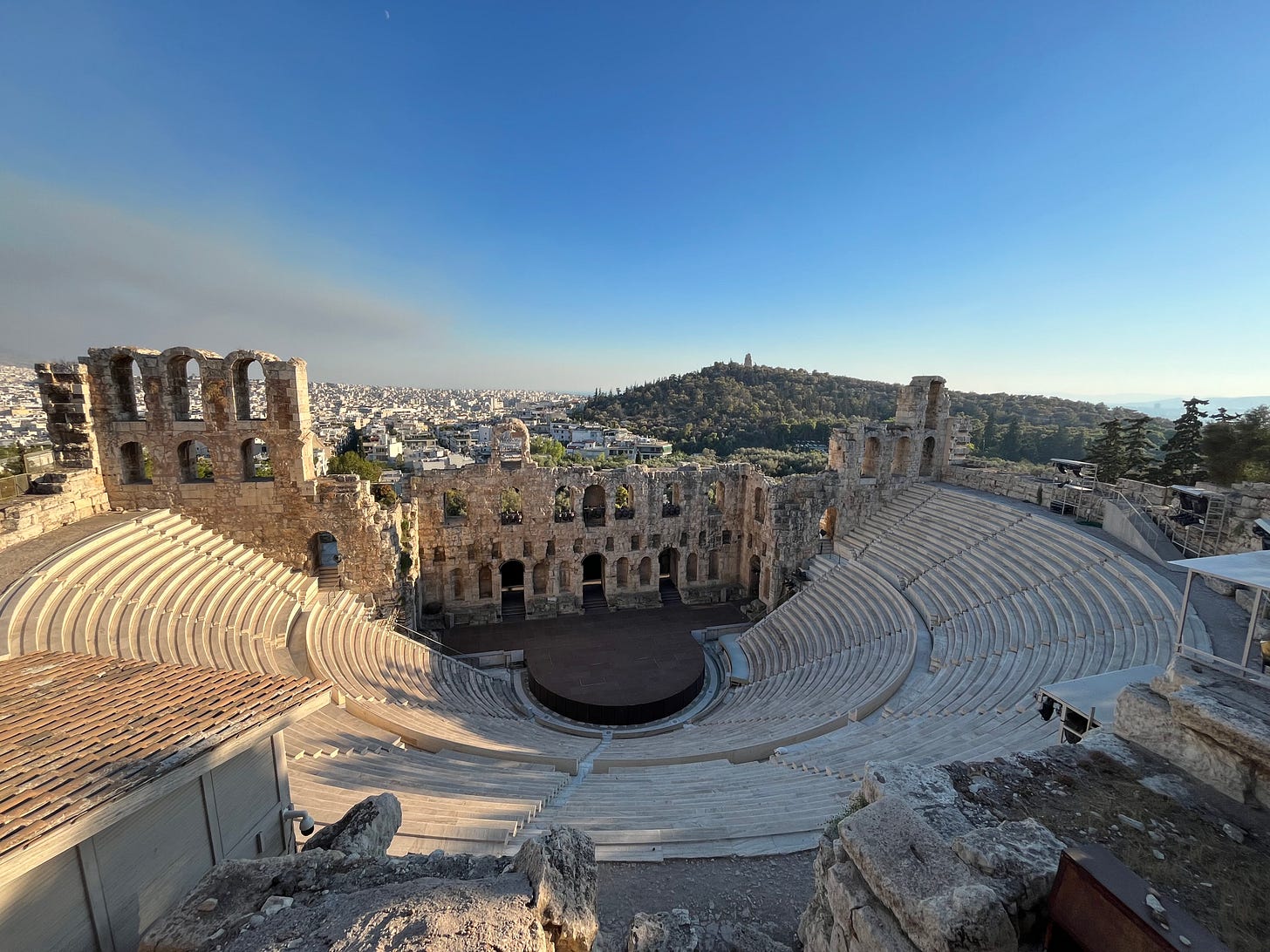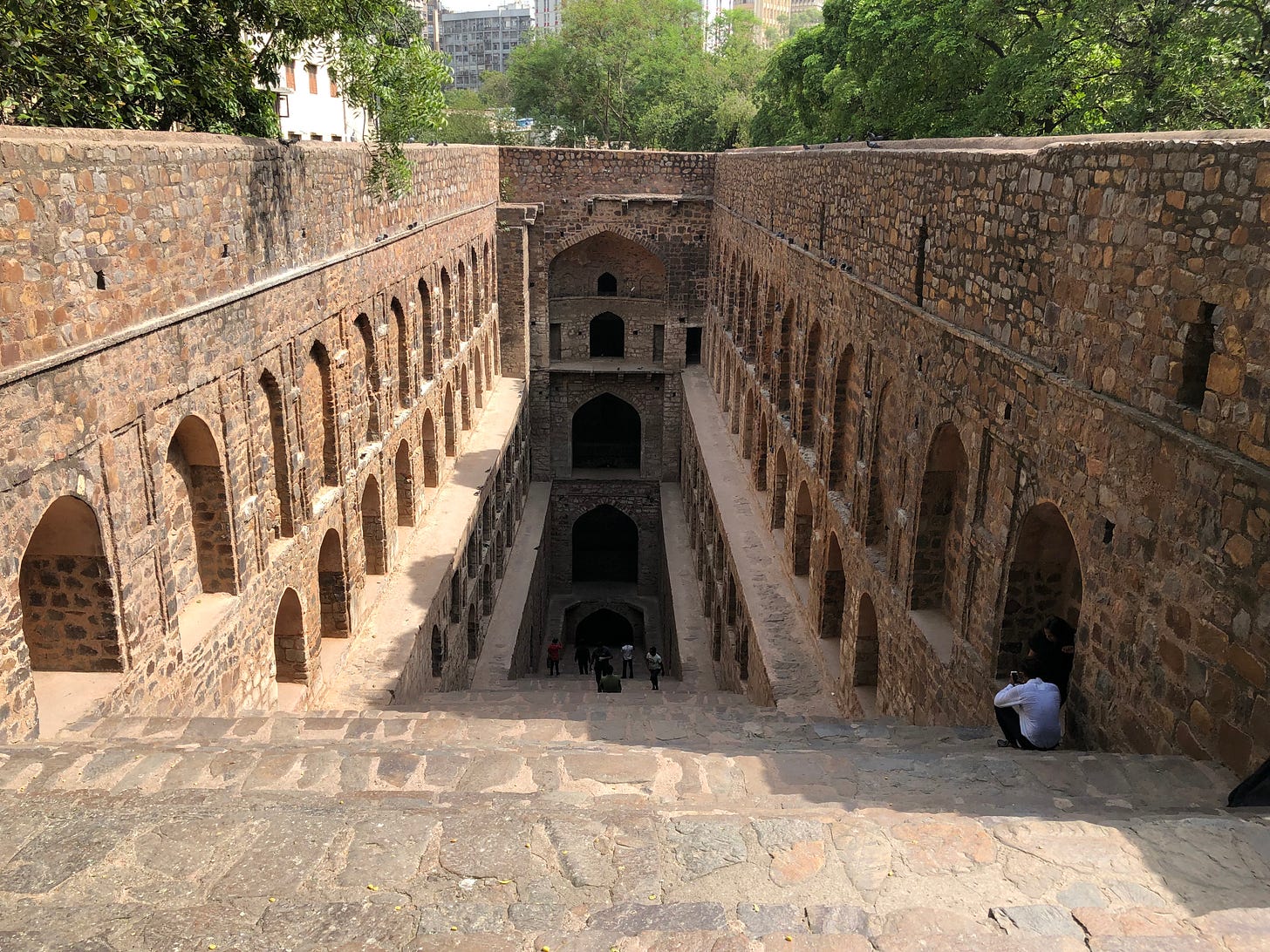Stepped Architecture: A Paean
Theaters and stepwells are built into the natural environment in a pleasing way
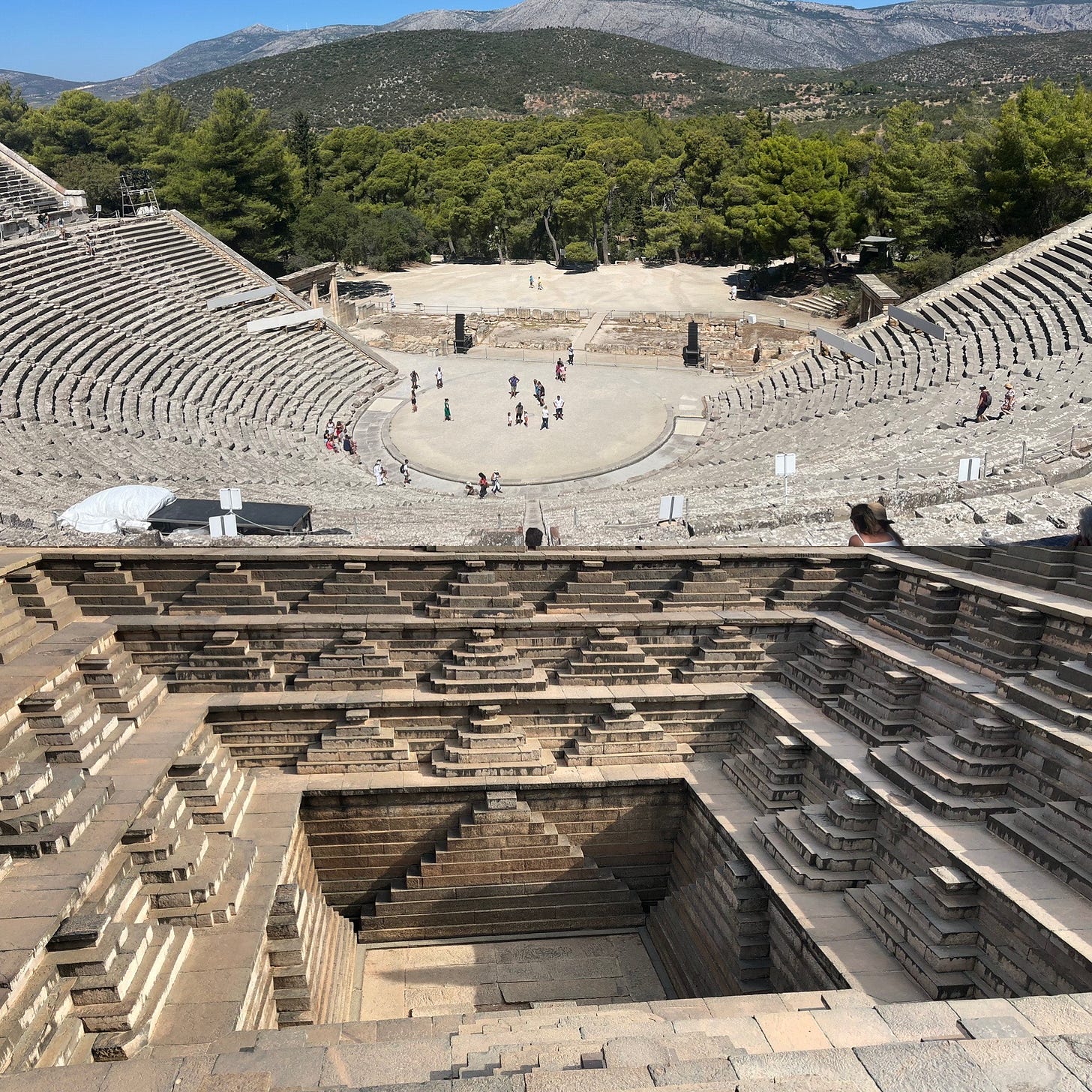
There is a particular type of structure that I am rather fond of: stepped architecture. By this, I mean open-air, tiered structures, not staircases or buildings with multiple layers. What I like about open-air stepped architecture — beyond their terraced, cascading nature — is the way that they blend into the natural environment, and in fact imitate it. There are three examples of this architecture that come to mind. The first is the freestanding step pyramid of Mexico, which conveys the look of a mountain.
I will focus on the other two examples, both of which are often built into physical terrain. These are the stepwells or baoli/baori/vav of India, which being bored into the ground, resemble valleys or subterranean caverns, and the semi-circular seating areas of theatres, or theatron of ancient Greece, which were built into hills, thus resembling mountain slopes (in common parlance, these are often referred to as “amphitheaters” but those are technically circular and often freestanding, like the Colosseum of Rome). My interest in these two types of landmark is primarily aesthetic, rather than being related to function. I tend to enjoy the feel of structures that are simultaneously exposed to nature and modified by human endeavor, such as courtyards.
Many of the theatres of Greece are pretty well-known, with the most famous example being the theatre at Epidaurus above. The function and layout of threatrons is relatively self-evident. They made use of landmarks, like hills, to utilize the natural slopes for seating and acoustics. Hills were easy to build on for this purpose, though later Romans built freestanding amphitheaters as well.
In her book The Vanishing Stepwells of India, journalist Victoria Lautman describes her experience of a stepwell as “a man-made canyon with a complex parade of steps, columns and platforms leading into the earth to an unfathomable depth. It was utterly disorienting. I had no idea what I was seeing, but it subverted the experience of architecture as something we look up at, not down into.”
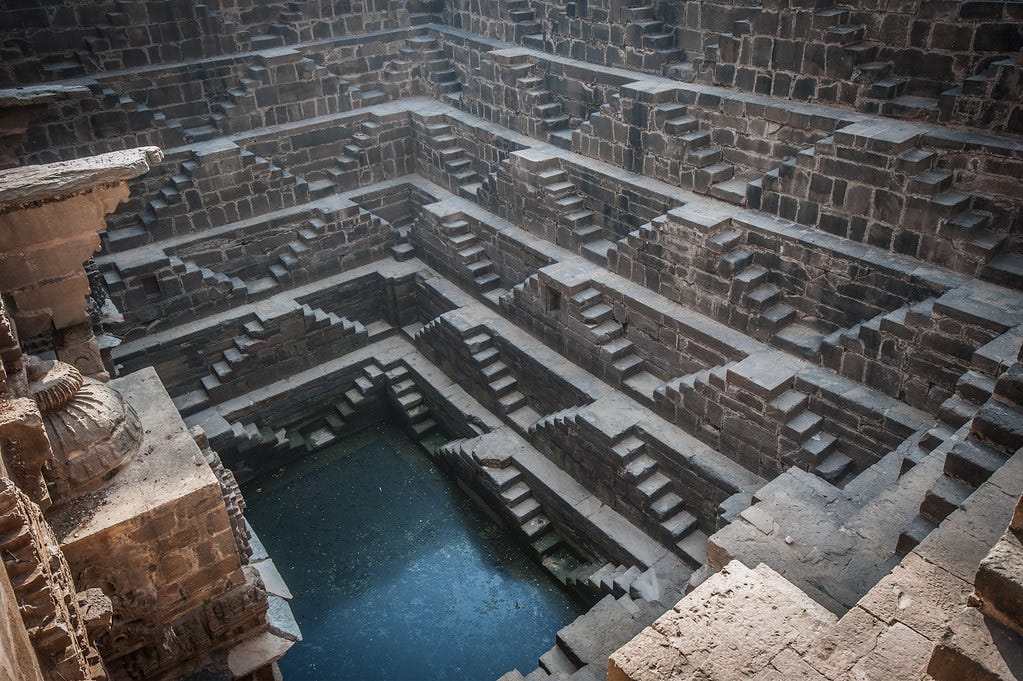
The point of a stepwell is to store water, especially in the more arid areas of India, such as the Deccan Plateau and western India (Rajasthan and Gujarat). This explains why they are so deep and have so many steps. During the rainy season, they fill up, and it is possible to gather water from the surface, but as the weather dries up, the level of water in the stepwell gets lower and lower, hence the steps to enable access to the water. Throughout a stepwell, there are pavilions, resting areas, and temples.
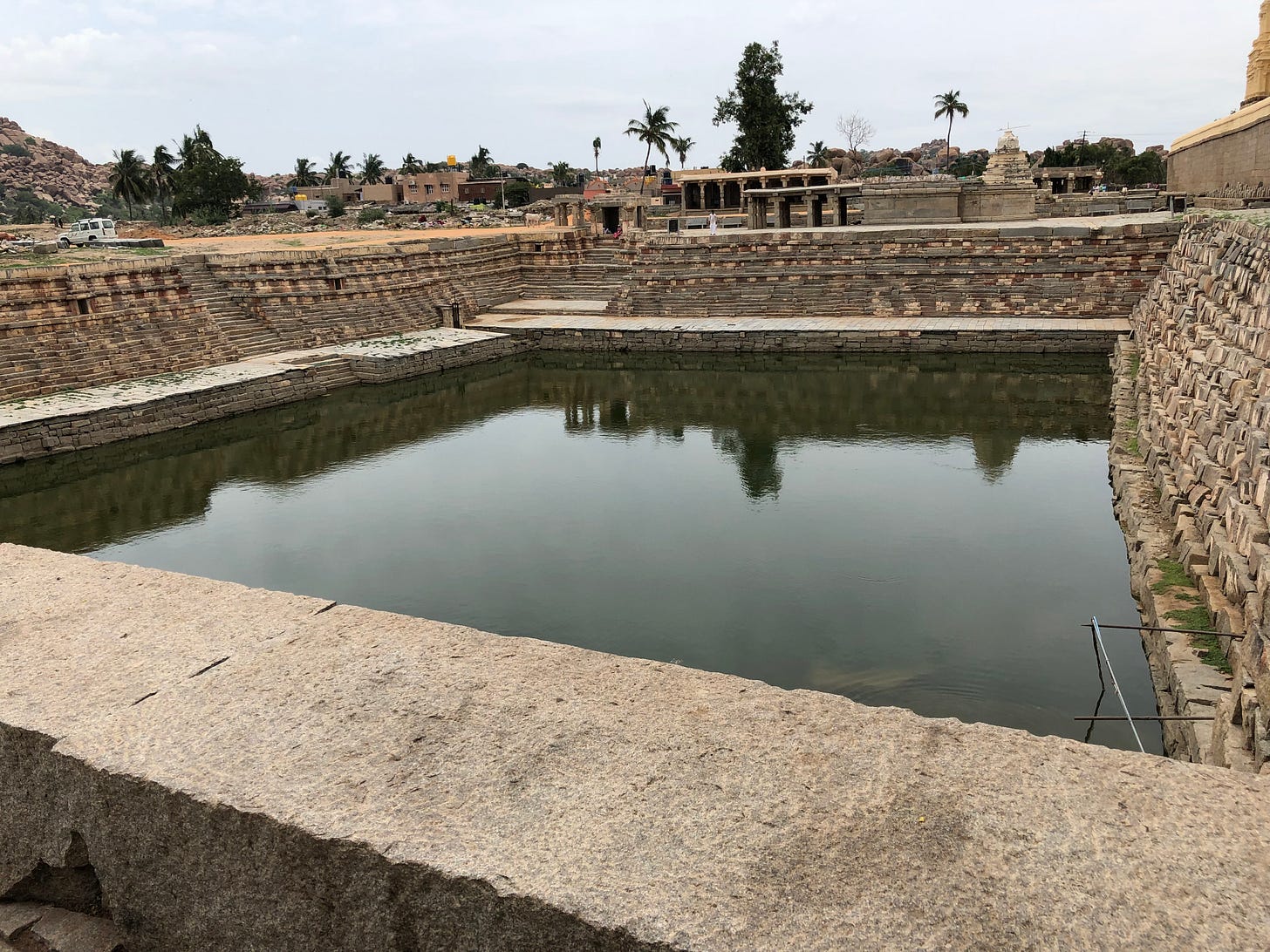
This last stepwell, found in New Delhi is pretty cool. It isn’t the most magnificent stepwell in India, but it is right in the middle of New Delhi. It opens up suddenly near prominent government and commercial buildings. A lot of people come to hang out here, whether to eat lunch or go on dates or just pass the time, read, draw, listen to music. There is currently a movement to restore stepwells in India, with many being cleaned up and revived, whether to be used for water by locals, or as tourist sites.

